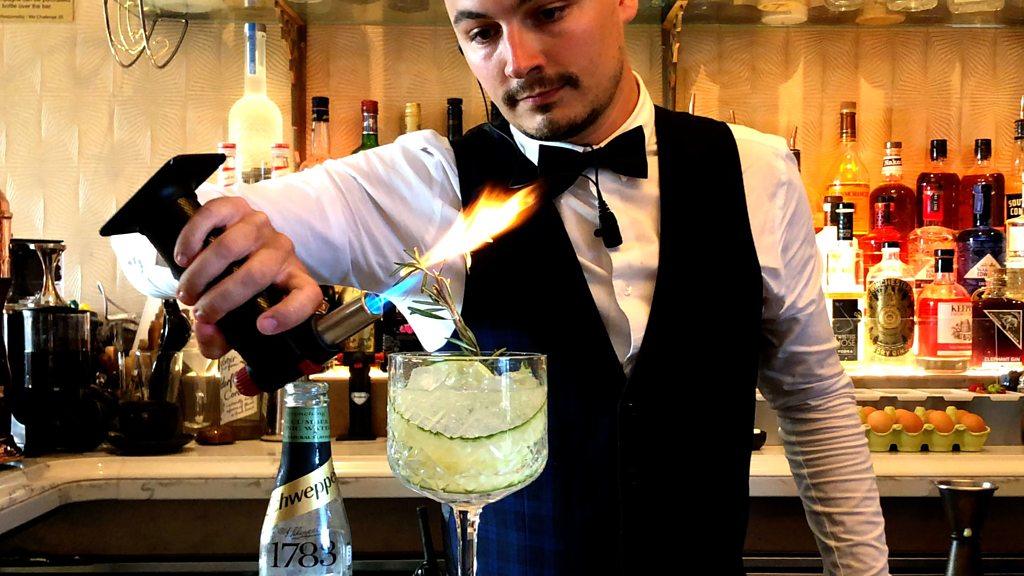How long can gin stay in high spirits?
- Published
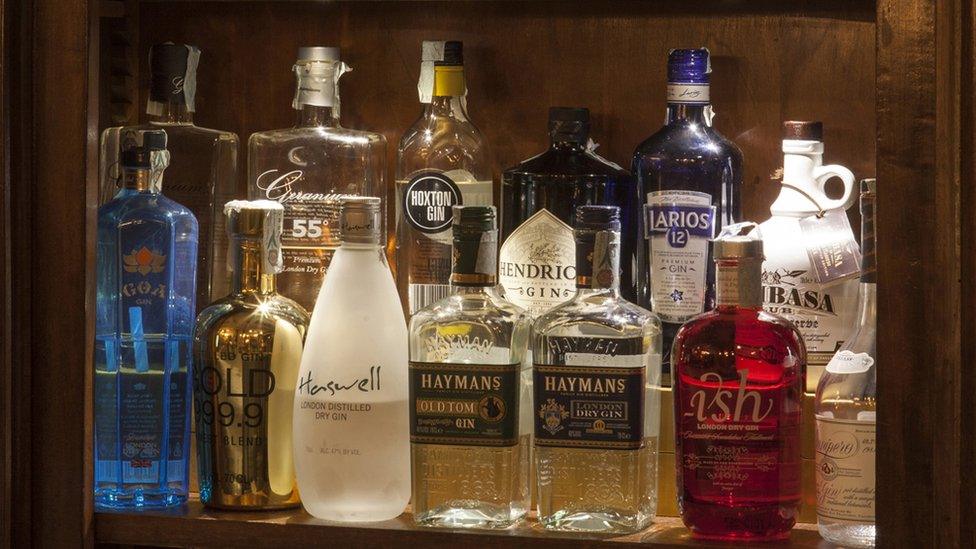
Gin has gone from a drink for posh parents and old buffers to the hippest spirit in the UK - but could it soon be on the wane again?
Friday night at the House of Hortus bar in London's Soho is shaping up nicely.
There is a choice of themed rooms with lighting, furniture and even scents matched to the colour and flavour of the drinks being served, and there's groovy music, too.
There's a good choice of cocktails, different ones in each room: rhubarb and ginger, plum and cinnamon, pomegranate and rose, all mixed with sparkling wine and garnished with mint or rose petals. But there's one thing they have in common: the alcohol in all of them is gin.
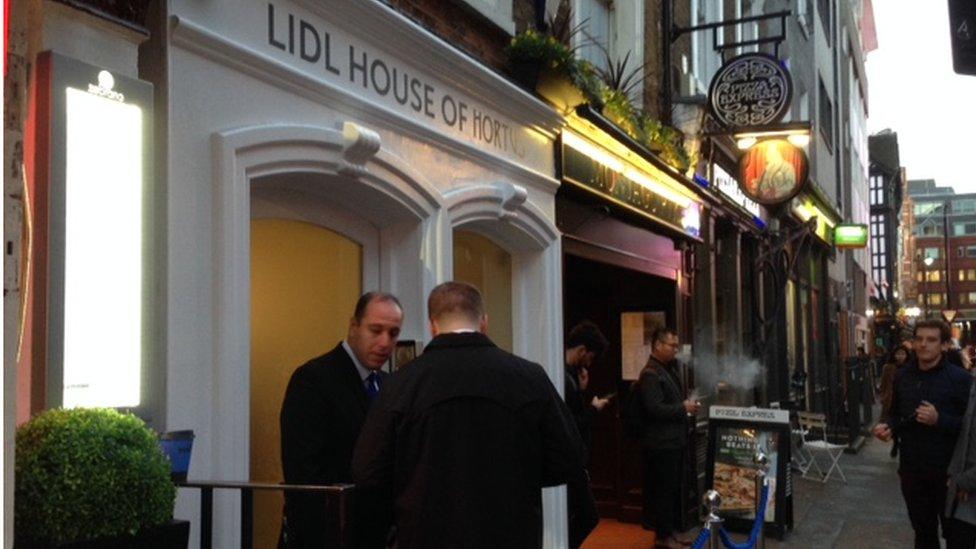
The Lidl House of Hortus pop-up bar in Soho
The night is in fact to promote discounter Lidl's Christmas gin range.
The chain is banking on it contributing to a bumper Christmas - its sales of the spirit are already 40% higher this year than last.
This isn't just the fashion at Lidl, of course. Aldi's gin won joint silver (with Lidl's) at this year's International Wine and Spirits awards and Asda reports a mind-blowing rise of 76% in gin sales this year.
Lidl says 1.5 million more adults drink gin today than four years ago.
And this week saw the launch of a £4,000 bottle of gin, external. Available only at chic department store Harvey Nichols.
Gin's popularity isn't just found in a glass these days.
Essence of gin runs through a startling list of products: body butter, scented candles and lip balms, tea bags, advent calendars, popcorn and gin-flavoured cheese and chocolates.
All this would have bemused the late Queen Mother's generation, for whom gin aperitifs marked the spirit's last high popularity mark sometime around 1970.
Juniper, the defining aromatic that gives the drink its name, may not now even be discernible among the flavours featured. Roasted white sesame seeds, seaweed, hibiscus and sansho (Japanese pepper) have all been pressed into service for flavouring gin.
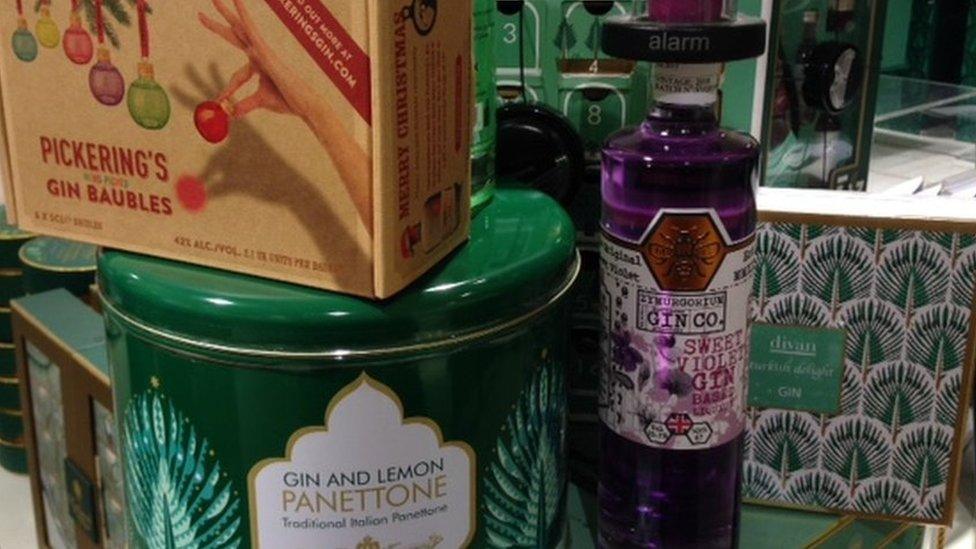
Is there anything you can't put a gin theme on?
How has it come to this? And can it continue?
The answer to the first question is a simple policy tweak by the government. Before 2009, the law meant no distillery under a 1,800-litre (400 gallons) capacity would be granted a licence. It did this to try to stop small-scale hooch makers.
But then the government's tax collector, HMRC, at the urging of Sipsmith Gin, changed its policy to allow small, craft distillers "as long as they had good business reasons and strong security could be evidenced to protect excised duty revenues".
The number of stills rocketed. HMRC says there are currently 419 licensed distilleries in the UK; in 2009 there were only 113.

Nicholas Cook of the Gin Guild hasn't (quite) called peak gin
Two brands in particular stand out for whetting the trendsetters' appetite, says Nicholas Cook, director general of industry body the Gin Guild.
"Bombay Sapphire was a revolution at the time with its lighter, more botanical style and the other one was Hendrick's, which marked itself out with what were then novel botanicals, in the form of cucumber and rose."
Another trailblazing feature of the two brands were their "inspirational, individual and stylish bottles".
But with 500 gins in the UK alone, uniqueness on these two fronts is no longer enough.
Peak gin, it seems, is nearing.
A major report on the UK white spirits market, by market research firm Mintel, will be published in December. Its author, analyst Alice Baker, says gin is by far and away the fastest-growing of the white spirits with sales across the board up by around 25%.
"Gin could have another few years of growth - but then it could plateau. As with any trend, it has its limits."
Even the Gin Guild comes close to acknowledging this although it's hardly going to call time on its own product. It prefers to say it is at "peak brand".
"It would be hard to enter the market now," admits Nicholas Cook. "You'd be hard pushed to find room on a retailer or bartender's shelves."
And although the Guild may not want to acknowledge it too strongly, its parent body the Worshipful Company of Distillers' annual debate, will in fact be: "This house believes that the gin boom has reached its peak."
But it holds this in May, so we won't know what they think about that until then.
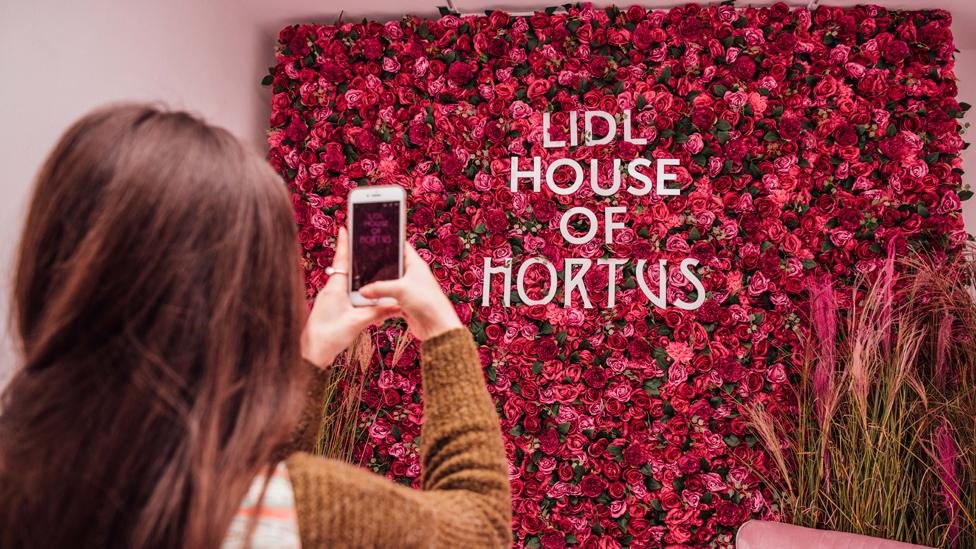
Pink gin is reborn
It is hard to see where next the gin market could go but Mintel suggests manufacturers distinguish themselves by using "colour outside the bottle".
In Lidl's House of Hortus pop-up a whole room was glowing pink, with those pinkish-type gins of pomegranate and rose on offer. Other rooms were also colour-themed.
And Mintel says this could go even further. "Pink rules now, but there are even ones that change colour. Social media users are a key target - vibrantly coloured gins lend themselves well to photos and videos and that sort of thing does help reach those precious under-40-year-old consumers."

A short history of gin
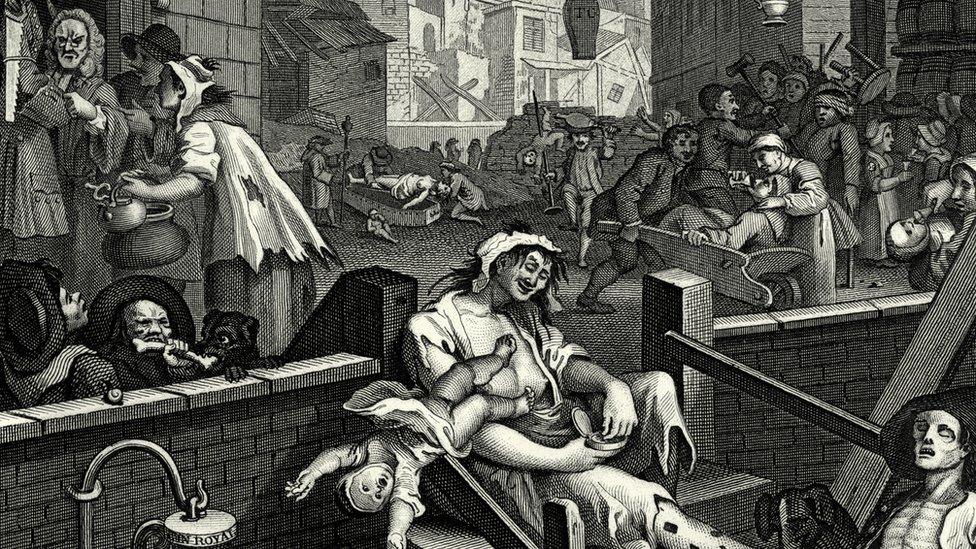
Hogarth's Gin Lane: idleness, squalor and oblivion
Gin was invented in Holland in the 16th Century as a medicine, the English caught on to the "Dutch courage" habit when fighting with the Dutch in the Thirty Years' War
King Charles I gives the Worshipful Company of Distillers the sole right to distil spirits in London, partly to help English farmers by using surplus corn and barley
More royal help from King William III (a Dutchman), he actively encourages spirit production to raise money for wars. Gin becomes cheaper and more popular than beer
Overuse of gin in the 1730s becomes a scandal as portrayed in Hogarth's Gin Lane - idleness, vice and misery, madness and death
The "gin palaces" of the Victorian era are built, bright and glamorous giving the new industrial working class a place to spend their money
Gin falls from fashion, becoming the province of the posh and elderly until in 2009 a change in the law makes it easier to open a distillery and the new boom is unleashed

Meanwhile, all those who have joined in the gin party may like to consider what they can turn their hand to if the party is indeed winding down.
All those gin stills could be turned in a trice to another spirit.
Paul Jackson, the founder and editor of the Gin Guide, expects it to be rum.
At least he won't be out of a job. He is currently laying out the pages for the first edition of the all new Rum Guide.
Mintel's Alice Baker agrees that rum could be a contender. "It has the provenance potential - the story of which Caribbean island it originates from, and it doesn't dominate the drink, if you had the right sort of marketing campaign that could start to improve again."
Either way, HMRC won't mind as it will still get its cut.
It takes a hefty payment from any spirit sold. For a litre bottle of 40% alcohol by volume that is currently £11.50.
- Published13 November 2018
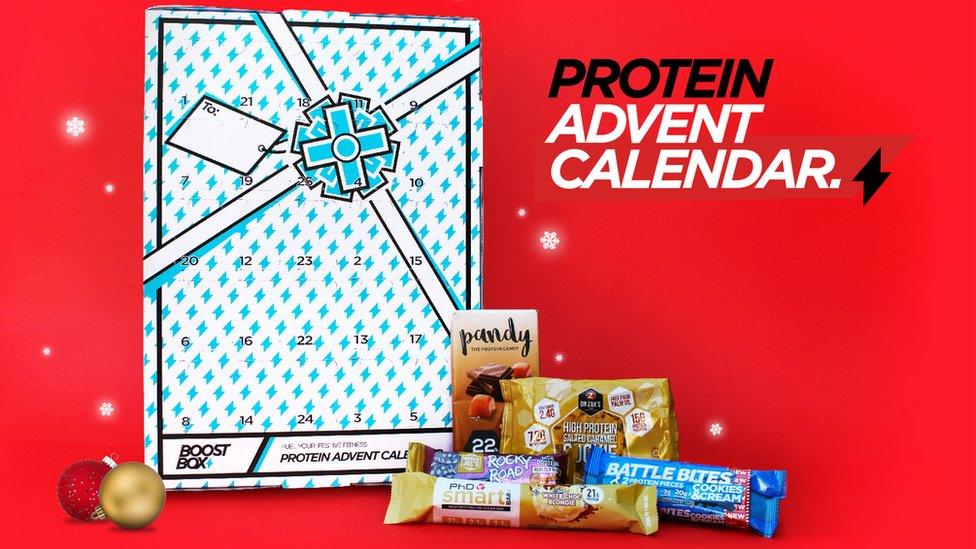
- Published26 September 2018
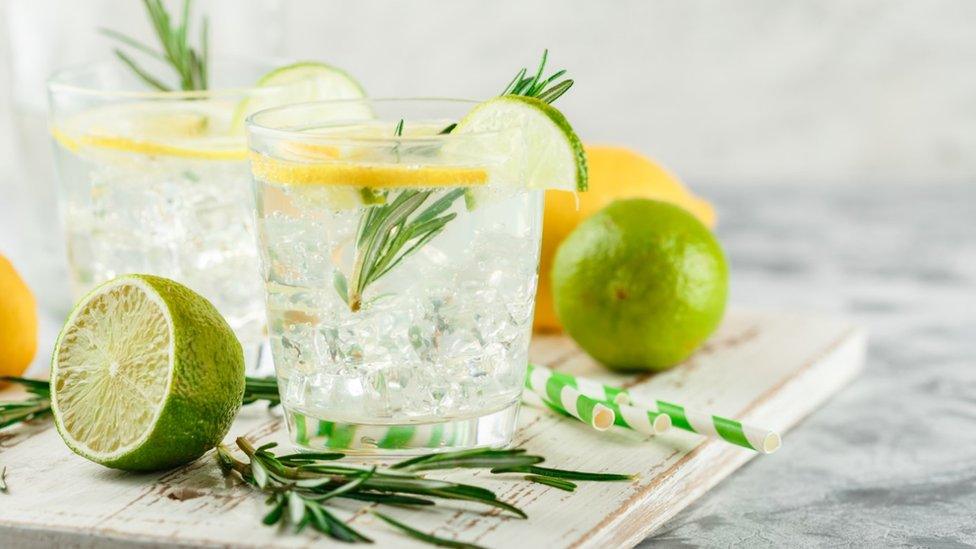
- Published18 September 2018

- Published27 January 2018
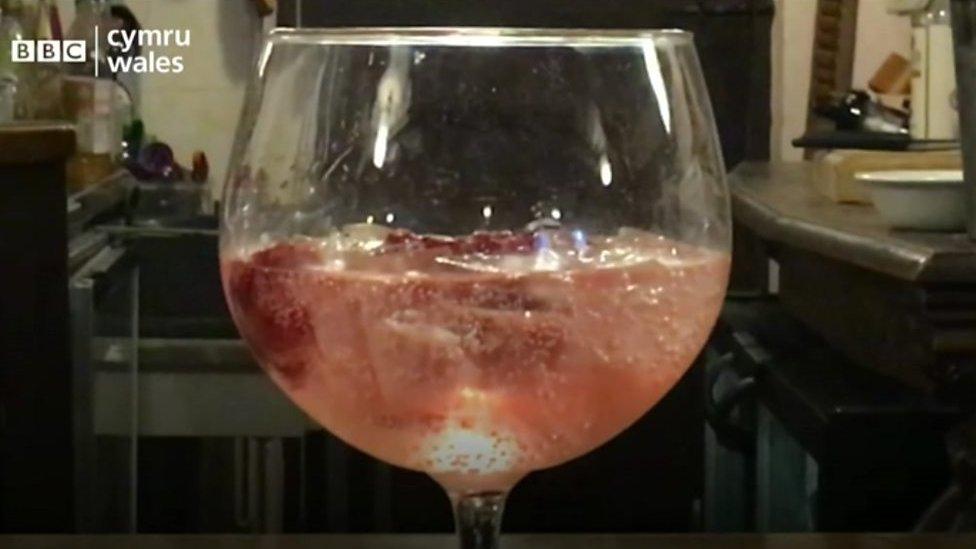
- Published20 July 2018
